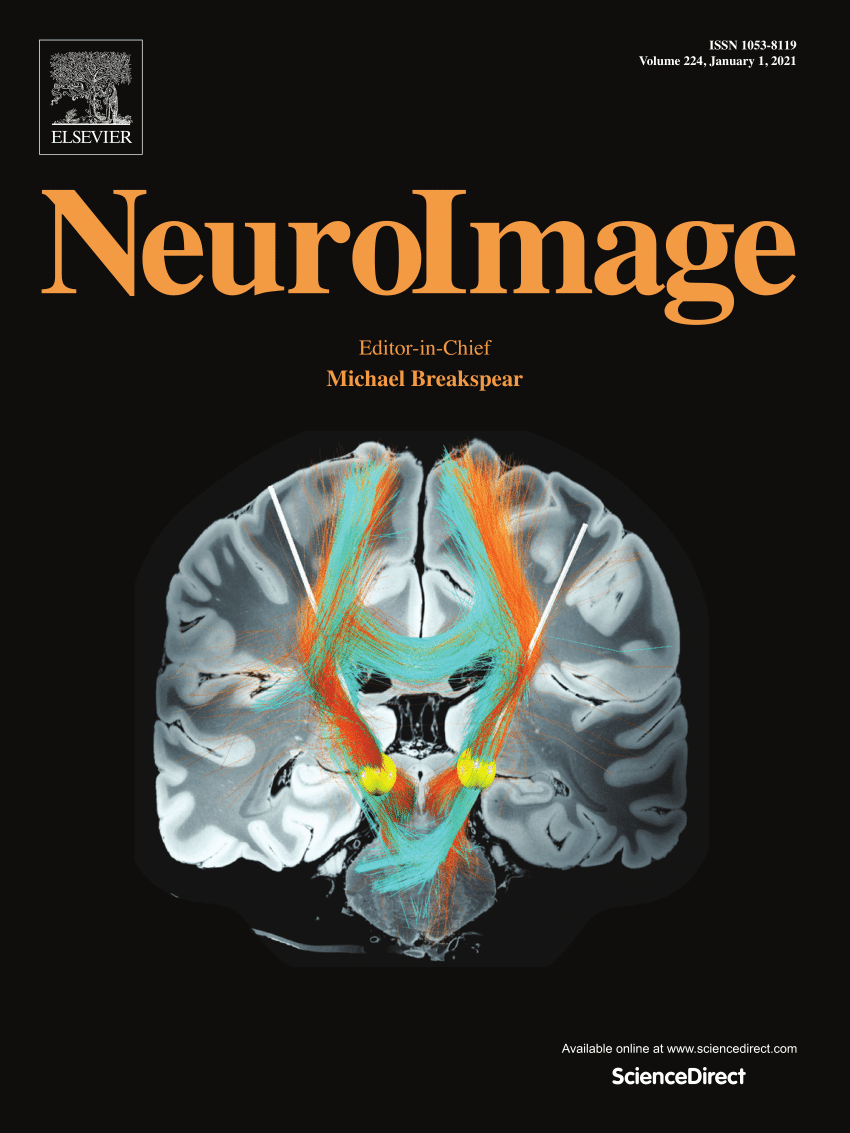In vivo cortical microstructure mapping using high-gradient diffusion MRI accounting for intercompartmental water exchange effects
IF 4.7
2区 医学
Q1 NEUROIMAGING
引用次数: 0
Abstract
In recent years, mapping tissue microstructure in the cortex using high gradient diffusion MRI has received growing attention. The Soma And Neurite Density Imaging (SANDI) explicitly models the soma compartment in the cortex assuming impermeable membranes. As such, it does not account for diffusion time dependence due to water exchange in the estimated microstructural properties, as neurites in gray matter are much less myelinated than in white matter.
In this work, we performed a systematic evaluation of an extended SANDI model for in vivo human cortical microstructural mapping that accounts for water exchange effects between the neurite and extracellular compartments using the anisotropic Kärger model. We refer to this model as in vivo SANDIX, adapting the nomenclature from previous publications. As in the original SANDI model, the soma compartment is modeled as an impermeable sphere due to the much smaller surface-to-volume ratio compared to the neurite compartment. A Monte Carlo simulation study was performed to examine the sensitivity of the in vivo SANDIX model to sphere radii, compartment fractions, and water exchange times. The simulation results indicate that the proposed in vivo SANDIX framework can account for the water exchange effect and provide measures of intra-soma and intra-neurite signal fractions without spurious time-dependence in estimated parameters, whereas the measured water exchange times need to be interpreted with caution. The model was then applied to in vivo diffusion MRI data acquired in 13 healthy adults on the 3-Tesla Connectome MRI scanner equipped with 300 mT/m gradients. The in vivo results exhibited patterns that were consistent with corresponding anatomical characteristics in both cortex and white matter. In particular, the estimated water exchange times in gray and white matter were distinct and differentiated between the two tissue types.
Our results show the SANDIX approach applied to high-gradient diffusion MRI data achieves cortical microstructure mapping of the in vivo human brain with the evaluation of water exchange effects. This approach potentially provides a more appropriate description of in vivo cortical microstructure for improving data interpretation in future neurobiological studies.
利用高梯度扩散MRI进行体内皮层微观结构映射,计算室间水交换效应。
近年来,利用高梯度扩散磁共振成像(high gradient diffusion MRI)绘制皮层组织微结构的研究越来越受到人们的关注。Soma And Neurite Density Imaging (SANDI)明确地模拟了假设不渗透膜的皮层中的Soma室。因此,由于灰质中的神经突比白质中的神经突髓鞘少得多,因此它没有考虑到在估计的微观结构特性中由于水交换而产生的扩散时间依赖性。在这项工作中,我们对一个扩展的SANDI模型进行了系统的评估,该模型用于体内人类皮层微结构映射,该模型使用各向异性Kärger模型来解释神经突和细胞外室之间的水交换效应。我们将这种模型称为体内SANDIX,采用以前出版物中的命名法。与最初的SANDI模型一样,由于与神经突隔室相比,体细胞隔室的表面积与体积比要小得多,因此被建模为一个不透水的球体。通过蒙特卡罗模拟研究来检验体内SANDIX模型对球体半径、隔室分数和水交换时间的敏感性。模拟结果表明,提出的体内SANDIX框架可以解释水交换效应,并提供体细胞内和神经突内信号分量的测量,而估计参数没有虚假的时间依赖性,而测量的水交换时间需要谨慎解释。然后将该模型应用于13名健康成人在配备300 mT/m梯度的3-Tesla连接体MRI扫描仪上获得的体内扩散MRI数据。体内结果显示出与皮层和白质中相应的解剖特征相一致的模式。特别是,灰质和白质中估计的水交换时间在两种组织类型之间是明显不同的。我们的研究结果表明,SANDIX方法应用于高梯度扩散MRI数据,实现了体内人脑皮层微观结构的映射,并评估了水交换效应。这种方法可能为未来神经生物学研究提供更合适的体内皮层微观结构描述,以改善数据解释。
本文章由计算机程序翻译,如有差异,请以英文原文为准。
求助全文
约1分钟内获得全文
求助全文
来源期刊

NeuroImage
医学-核医学
CiteScore
11.30
自引率
10.50%
发文量
809
审稿时长
63 days
期刊介绍:
NeuroImage, a Journal of Brain Function provides a vehicle for communicating important advances in acquiring, analyzing, and modelling neuroimaging data and in applying these techniques to the study of structure-function and brain-behavior relationships. Though the emphasis is on the macroscopic level of human brain organization, meso-and microscopic neuroimaging across all species will be considered if informative for understanding the aforementioned relationships.
 求助内容:
求助内容: 应助结果提醒方式:
应助结果提醒方式:


